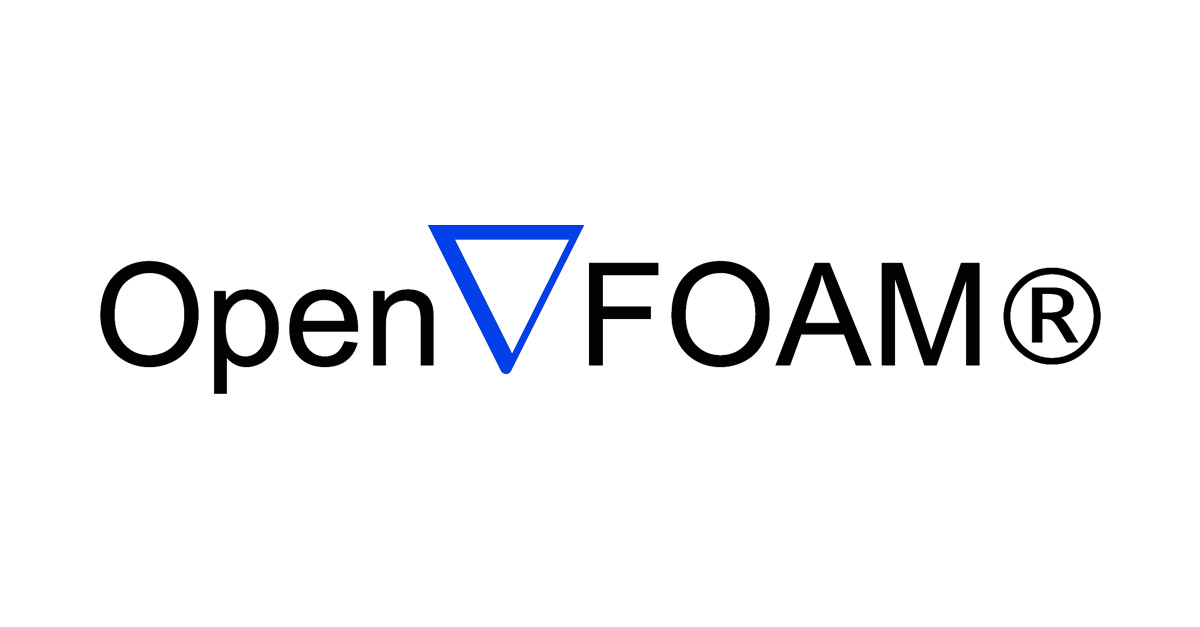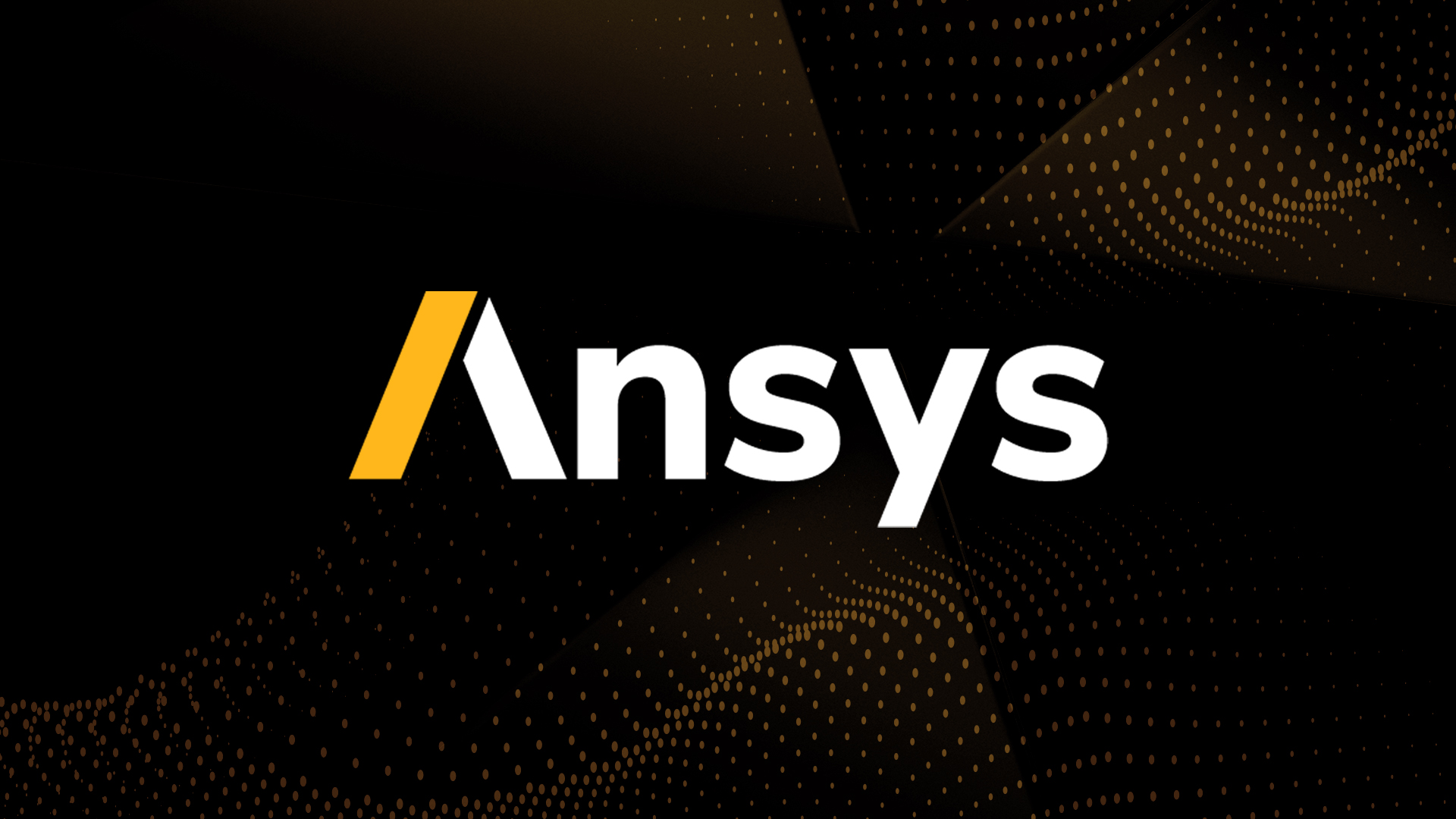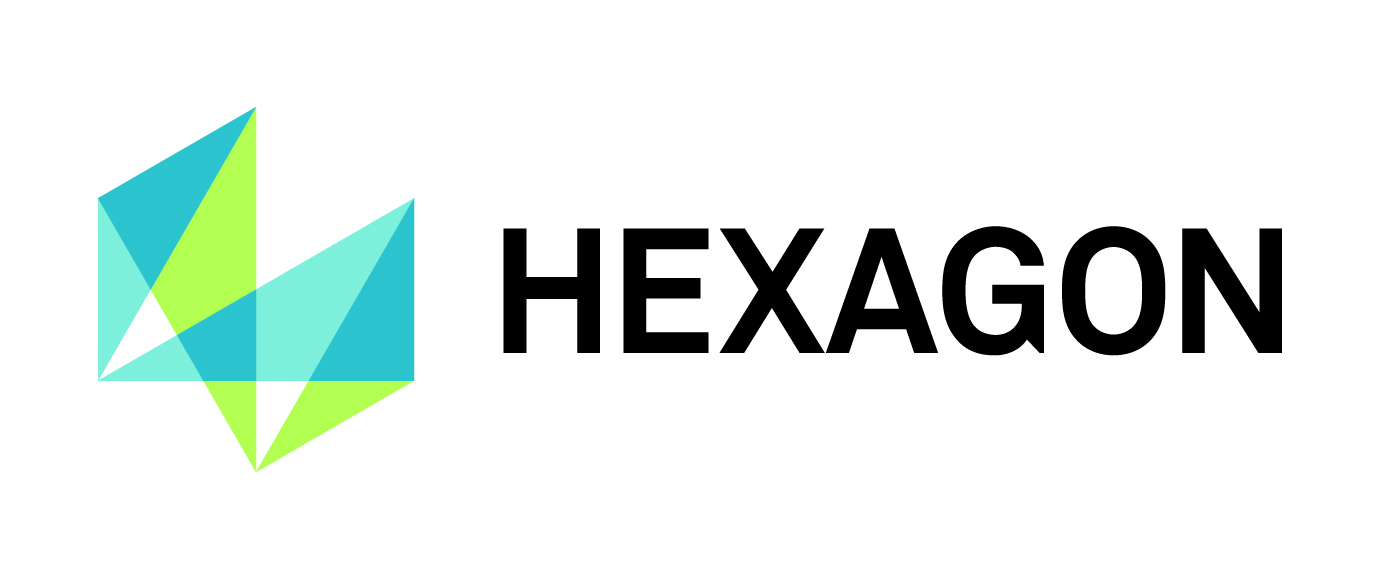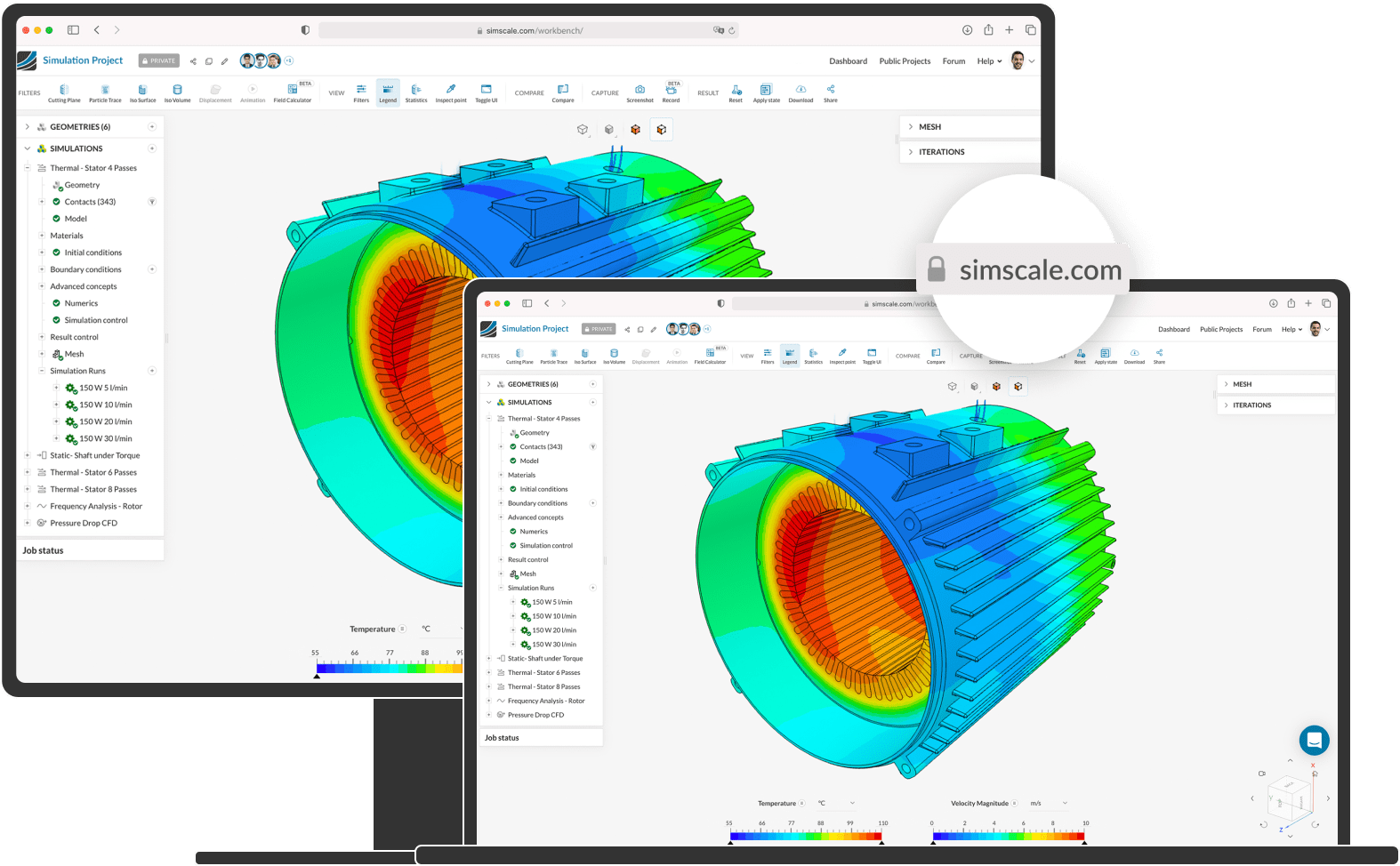Introduction
Computer-aided engineering (CAE) software has become indispensable for product development teams across various industries. From conceptual design to simulation and validation, these tools play a pivotal role in reducing physical prototyping needs and helping optimize products virtually before manufacturing. With countless options available in the market, it can be challenging to identify the most suitable CAE software. This article analyzes and compares 15 top CAE software based on key criteria to help engineering professionals make an informed choice.
Methods of Evaluation
To evaluate and rank the 15 CAE software, we considered several conventional metrics like the breadth of modeling, analysis and simulation capabilities, industry adoption rates, customer reviews and support. Additionally, we also leveraged digital metrics like the number of backlinks, average monthly search traffic and search interest trends over the last 5 years for the keyword phrase and individual company names to gauge their online relevance and popularity.
1. Siemens PLM Software
Siemens PLM Software offers comprehensive computer-aided engineering (CAE) software to support product development processes. Their flagship CAE solution is Siemens NX, an integrated CAD/CAM/CAE platform for digital product development. Siemens NX provides tools for model-based definition, simulation, manufacturing, and data management.
Pros: Main advantages of Siemens’ CAE software include its integrated CAD/CAE/PLM tools via the NX platform, long-standing partnerships and certifications with major manufacturers, and ability to deploy tools on-premise or via the cloud with Teamcenter.
Cons: The high total cost of ownership for the fully-featured NX software can be prohibitive for some smaller companies or ones just starting out with CAE. The learning curve to master all of NX’s capabilities is also quite steep.
Pricing: Pricing for Siemens NX and Teamcenter depends on the needed suite of tools and number of concurrent users. Annual maintenance contracts are also required beyond the initial license fees. Contact a Siemens sales representative for a customized quote.
Some key stats about Siemens PLM Software’s CAE capabilities include: – Over 6 million users worldwide of their CAD/CAM/CAE solutions. – Partnerships with over 50 major OEMs and Tier 1 suppliers who use their solutions. – Cloud-based Teamcenter provides PLM capabilities that can integrate with their on-premise CAE tools.
2. Dassault Systemes
Dassault Systemes is a French multinational technology company that develops 3D design, 3D digital mock up, and product lifecycle management (PLM) software. Founded in 1981, Dassault Systemes is best known for its 3DEXPERIENCE platform and SOLIDWORKS 3D CAD product.
Pros: Some key advantages of Dassault Systemes software include:
– Broad 3D design, simulation and data mgmt portfolio
– Native support for geometric and topological models
– Cutting edge tools like Living Heart Project
Cons: A potential disadvantage is the high cost of some of Dassault Systemes’ more advanced software solutions which may be prohibitive for some smaller companies and budgets.
Pricing: Pricing varies depending on the specific software solution. SOLIDWORKS professional 3D CAD software starts at around $4,000 per year. More advanced solutions like SIMULIA and 3DEXPERIENCE platform pricing is available upon request for enterprise-level deployments.
Some key stats about Dassault Systemes include:
– Over 20,000 companies and 1 million users worldwide
– Annual revenue of over $5 billion
– Headquarters in Velizy-Villacoublay, France
– Employes over 25,000 people globally
3. Synopsys TCAD
Synopsys TCAD is a leading computer-aided engineering (CAE) software for semiconductor process and device simulation. With specialized physics-based models and solvers, it provides critical insights into how materials, doping, gates, and other factors will impact device performance. This allows engineers to optimize designs earlier in the development cycle before costly fabrication.
Pros: Key advantages of Synopsys TCAD include:
– Leading semiconductor process and device simulation capabilities
– Specialized physics-based models and solvers for high accuracy
– Tight integration with broader Synopsys design platforms for a seamless workflow
Cons: The high up-front cost of licensing and learning to use the sophisticated simulation models could be considered a disadvantage, especially for smaller organizations.
Pricing: Synopsys TCAD pricing is not publically listed but is available through contacting a Synopsys sales representative. Being enterprise software, pricing is likely customized based on organization size, desired features/models, and support/maintenance plans.
Some key stats about Synopsys TCAD:
– Used by more than 300 global customers in semiconductor, design, and research organizations
– Over 30 years of continuous development and enhancement
– Simulates physical phenomena like quantum confinement, quantum tunneling and heat transfer
– Integrates tightly with Synopsys’ broader design tools like Sentaurus Workbench
4. Bentley Systems
Bentley Systems is a leading supplier of software solutions for infrastructure engineering, design and operations. They offer a comprehensive collection of Computer Aided Engineering (CAE) applications under the banner of MicroStation and ProjectWise. Their solutions are used worldwide for diverse infrastructure projects including roads, bridges, utilities, transportation systems, buildings and more.
Pros: Key advantages of Bentley Systems’ CAE software include:
– Comprehensive suite for infrastructure modeling covering all stages from planning to operations.
– Tight integration across CAD, analysis, simulation and GIS tools for collaborative workflows.
– Strong cloud and collaboration capabilities through ProjectWise for distributed project teams.
Cons: One potential disadvantage is the higher upfront licensing costs compared to some other vendors. However, Bentley argues this is offset by the total cost of ownership benefits of their integrated platform approach.
Pricing: Bentley Systems offers flexible perpetual and subscription licensing options for their CAE software portfolio. Pricing depends on the specific applications, seats and usage required. They also offer trial versions to evaluate the full capabilities.
Some key stats about Bentley Systems’ CAE software:
– Over 1.6 million users in more than 60 countries worldwide.
– Designers of over 80% of oil and gas infrastructure.
– Engineers use Bentley software to help plan, design, construct and operate 25% of the Earth’s major infrastructure activities annually.
5. Ansys
Ansys is a global leader in computer-aided engineering (CAE) software. Founded in 1970 and headquartered in Canonsburg, Pennsylvania, Ansys provides a comprehensive system of engineering simulation applications. With a team of over 5,000 professionals serving customers in more than 60 countries, Ansys works with partners and customers to deliver end-to-end product development solutions across the entire lifecycle from design conceptualization to retirement.
Pros: Some of the key advantages of Ansys include:
– Extensive multiphysics capabilities to simulate coupled phenomena involving structures, fluids, electromagnetics, heat transfer etc.
– Widely adopted in various industries due to proven results and scalability
– Powerful meshing and solver tools to conduct simulations of complex products and systems
Cons: One potential disadvantage is that Ansys software can be expensive for smaller organizations due to perpetual licensing model and high performance computing requirements for complex simulations.
Pricing: Ansys offers flexible licensing options including perpetual, term and lease licensing. Perpetual licenses provide ownership of the software in exchange for higher upfront costs. Prices vary based on software modules, number of seats and compute/solver requirements. For reference, a typical Ansys Workbench Engineering package may cost around $10,000-15,000 per seat with annual maintenance fees of 20-25% of license fees.
Some key stats about Ansys include:
– Used by more than 50,000 customers worldwide across industries like automotive, aerospace, biomedical and electronics
– Over 5,000 employees globally
– Extensive partner ecosystem of over 800 partners
– Claimed market leadership in CAE for over 20 years
6. MSC Software
MSC Software is a global leader in computer-aided engineering (CAE) simulation software. With flagship products like Nastran and Adams, MSC Software has been serving the CAE simulation needs of engineers and designers for over 50 years. Their broad portfolio of multidiscipline simulation tools helps predict product behavior, optimize designs, lower development costs, and shorten time to market.
Pros: Some key advantages of MSC Software’s CAE simulation solutions include:
– Broad portfolio covering structural, system, and multiphysics simulation needs
– Flagship products like Nastran and Adams are considered industry standards
– Flexible licensing programs for perpetual, subscription, and cloud-based usage
– Deep expertise in multiple industries helps address application-specific challenges
Cons: One potential disadvantage is the upfront cost of some of the premium packages, which may not be suitable for all budget sizes. However, MSC Software tries to address this with flexible perpetual and subscription licensing options.
Pricing: MSC Software offers both perpetual and subscription licensing for its CAE simulation software. Pricing depends on the specific products, modules, usage type (concurrent/named users), and deal size. Contact a sales representative for a customized quote.
Some key stats about MSC Software include:
– Over 50 years of expertise in CAE simulation across industries like aerospace, automotive, biomedical, and electronics
– Thousands of customers worldwide, including 99% of Fortune 500 manufacturing companies
– Flexible licensing options for all business sizes from startups to enterprises
7. Aspen Technology
Aspen Technology is a leading provider of asset optimization software. Founded in 1981, the company helps customers in various process industries such as oil & gas, chemicals, engineering & construction, and more to optimize the performance of their assets. AspenTech’s aspenONE software suite provides an integrated set of process engineering solutions to address the entire asset lifecycle from conceptual design to operational excellence.
Pros: Some key advantages of Aspen Technology’s aspenONE suite include:
– Strong process modeling capabilities to simulate complex process designs
– Industry-leading process simulation tools for rigorous modeling
– Tight integration with product lifecycle management (PLM) and manufacturing execution system (MES) solutions for an end-to-end digital thread
Cons: A potential disadvantage is that aspenONE requires significant configuration and customization to implement which leads to higher upfront costs compared to some competitors.
Pricing: Aspen Technology offers flexible pricing models for its aspenONE software including annual subscriptions and perpetual licenses. Pricing depends on the modules, number of users, and required support and services. The company also partners with system integrators who can provide customized quotes for an overall implementation.
Some key stats about Aspen Technology and its aspenONE software:
– Over 3,300 customers in more than 70 countries
– Servicing industries that represent over $4 trillion in annual manufacturing output
– More than 30 years of expertise in process engineering and digitalization
8. ESI Group
ESI Group is a global leader in virtual prototyping software for product design and manufacturing process optimization. Founded in 1973 and headquartered in Paris, France, ESI Group helps industrial manufacturers replace physical prototypes with virtual prototypes to reduce costs and bring products to market faster.
Pros: Key advantages of ESI Group’s CAE software include:
– Seamless modeling of complex multiphysics effects like crash, stiffening, NVH, and durability
– Collaborative optimization solutions that allow designers to work together across the product lifecycle
– Strong expertise in custom process modeling for applications like casting, forming, and composites manufacturing
Cons: One potential disadvantage is that ESI Group’s solutions can require significant compute resources for large-scale simulations. Customers may need to invest in powerful hardware to fully utilize the software’s capabilities.
Pricing: ESI Group offers flexible licensing options including perpetual, subscription/SaaS, and CPU-hour based. Pricing varies based on usage levels, modules, support plans, and other customization. Contact an ESI Group representative for a quote tailored to your organization’s needs.
Some key stats about ESI Group:
– Over 3,000 customers worldwide spanning automotive, aerospace, defense, industrial equipment, and more
– 35+ years of expertise in multidisciplinary simulation
– Deployed in over 20 industries using virtual prototyping solutions
9. SimScale
SimScale is an all-in-one cloud-based computer-aided engineering (CAE) software. It allows users to perform Computational Fluid Dynamics (CFD), Finite Element Analysis (FEA), and Thermal simulations for CAD models entirely in the cloud without having to download or install any software. This makes SimScale highly accessible from anywhere with an internet connection using only a web browser.
Pros: Some key advantages of SimScale include:
– All-in-one cloud-based platform for CFD, FEA and thermal simulations
– Online pre-processing, solver setup and post-processing tools accessible from any browser
– Affordable pay-as-you-go licensing model without any long-term commitments
– Collaborative workspace to share and discuss projects with coworkers & clients
Cons: One potential disadvantage is that being an all-cloud solution, SimScale fully depends on a stable internet connection. Offline or disconnected work is not possible.
Pricing: SimScale offers flexible pay-as-you-go pricing plans starting from $0.15/h for Standard Simulation units without any upfront or long-term commitments.
Some key stats about SimScale include:
– Used by over 200,000 engineers worldwide
– Supports all major CAD file formats including STEP, IGES, STL, etc.
– Integrates directly with popular CAD software like SolidWorks, Inventor, Creo etc.
– Over 10 year of experience in cloud simulation technology
10. OpenFOAM
OpenFOAM is an open source computational fluid dynamics (CFD) software developed by OpenFOAM Foundation. Originally developed by Springer, OpenCFD Ltd, it is now independently developed as an open source project by a diverse international developer and user community. OpenFOAM has a large user base in both commercial and non-commercial enterprises such as Formula One teams, automotive companies, aerospace agencies and universities.
Pros: Some key advantages of OpenFOAM include:
– It is open source and free to use, modify and distribute.
– It is highly extensible via its programming interfaces and APIs.
– It is well optimized for parallel computing on HPC platforms and clusters.
– Large active user community providing support, forums and code libraries.
Cons: One potential disadvantage of OpenFOAM is that it requires programming skills to set up complex models and simulations. The learning curve can be steep for those without a computational background.
Pricing: OpenFOAM is open source and completely free to download and use. There is no fee or license required to access the source code or use it for commercial applications.
Some key stats about OpenFOAM include:
– Over 200,000 downloads per year
– Used in over 120 countries worldwide
– Over 12,000 individual contributors
– Over 750 organizations contributing code and guidance notes
OpenFOAMOfficial home of The Open Source Computational Fluid Dynamics (CFD) Toolboxopenfoam.com
11. Hexagon PPM
Hexagon PPM, formerly known as T-FLEX, is a leader in computer-aided engineering (CAE) software. For over 30 years, Hexagon PPM has been helping engineers solve complex design challenges through its broad portfolio of modeling, simulation and optimization applications. Their solutions are used by some of the largest automotive and aerospace companies worldwide to design everything from cars and aircraft to heavy machinery.
Pros: Some of the key advantages of Hexagon PPM’s CAE software include:
– Specialist in geometry modeling, finite element analysis, computational fluid dynamics and Durability/Fatigue simulation
– Trusted partner for automotive and aerospace OEMs with proven deployment on major vehicle and aircraft platforms
– Strong focus on usability and productivity with an intuitive user interface and tight integration between apps
Cons: The high costs associated with Hexagon PPM’s CAE solutions could be viewed as a disadvantage, as they require a sizable investment and ongoing maintenance fees. However, for large enterprise customers, the benefits often outweigh the costs given the role these tools play in product development.
Pricing: Hexagon PPM offers both perpetual and term license options for its CAE software portfolio. Perpetual licenses provide ownership of the software but require an upfront payment. Term licenses operate on a subscription basis, offering flexibility but ongoing annual costs. For small to medium companies, annual subscription plans start around $5,000 whereas the largest enterprise deals can exceed $1 million per year.
Some key stats about Hexagon PPM include:
– Used by over 2,500 companies globally
– Over 1 million designers, engineers and analysts use Hexagon PPM applications annually
– Installed base of over 6 million seats
– More than 30 years of experience in geometric modeling and CAE
12. AnyLogic
AnyLogic is a leading simulation software for modeling complex systems. It offers a unique approach that combines discrete-event, system dynamics and agent-based paradigms into a single modeling framework. This allows users to capture aspects of hybrid systems that cannot be modeled with specialized tools focusing on just one paradigm.
Pros: Some key advantages of AnyLogic include:
– Unique 3D simulation software combining discrete events, continuous processes and agent-based modeling
– Cross-paradigm approach capturing hybrid systems better than specialized tools
– Intuitive GUI and wealth of examples accelerate model development
Cons: A potential disadvantage is that the cross-paradigm approach requires learning multiple modeling styles which can increase the learning curve compared to specialized tools focusing on just one paradigm.
Pricing: AnyLogic offers different licensing options depending on needs. There are student/indie licenses starting from $99 and commercial licenses starting from $999 with volume discounts available for enterprise users.
Some key stats about AnyLogic include:
– Used in over 80 countries across various industries such as logistics, healthcare, mining, etc.
– Over 30,000 professional licenses issued since the product launch
– Available in 8 languages with local sales and support worldwide
13. Dlubal Software
Dlubal Software is a leading provider of structural engineering and analysis software. Founded in 1984 in Germany, Dlubal Software develops the RSTAB, RSTAB Bridge and RFEM product lines for comprehensive structural modeling, analysis and design. With over 35,000 installations worldwide, Dlubal Software is recognized for its integrated tools that allow engineers to seamlessly transition between CAD, analysis and design.
Pros: Key advantages of Dlubal Software include:
– Tight integration with CAD/BIM tools for efficient workflows
– Robust modeling of steel, concrete and timber structures
– Comprehensive analysis types including linear, nonlinear and dynamic analysis
– Automated code checking and design optimizations
– Sophisticated 3D visualization of analysis results
Cons: As with any specialized engineering software, the learning curve can be steep. Dlubal Software does require training and experience to fully leverage its capabilities.
Pricing: Dlubal Software offers perpetual and subscription licensing options. Prices vary based on the specific product line (RSTAB, RSTAB Bridge or RFEM) and desired modules/functionality. Annual maintenance and support contracts are also available starting at 20% of perpetual license fees.
Some key stats about Dlubal Software’s structural analysis products:
– Used in over 80 countries worldwide
– Supports all major CAD formats including Autodesk, Bentley, Nemetschek, etc.
– Integrated calculators allow real-time updating of structural models
– Compliant with design codes from US, Canada, Europe and other regions
14. OpenFOAM
OpenFOAM is a free, open-source CFD (computational fluid dynamics) software developed by OpenCFD Ltd and distributed under the General Public License. It has a large developer and user community across academic and commercial organizations. Some key facts about OpenFOAM include that it has been in development since 2004 and the latest version is OpenFOAM-23. OpenFOAM is primarily developed and supported by OpenCFD Ltd but has a large independent developer community.
Pros: Some key advantages of OpenFOAM include:
– It is completely free and open-source, allowing users full access to make modifications.
– It has a large user community providing support, documentation and third-party add-ons.
– It has a modern C++ implementation making it highly extensible and customizable for specialized applications.
– It can solve complex multi-physics problems on both small and large scales using high performance computing clusters.
Cons: One potential disadvantage is that as an open-source project, OpenFOAM does not receive the same level of commercial support as proprietary CFD software. Users may need to rely more on the online community for troubleshooting and customization support.
Pricing: Since OpenFOAM is open-source software, it does not have any license fees or maintenance costs. Users can freely download it from the official website and use it for both commercial and non-commercial purposes at no cost.
Some key stats about OpenFOAM include:
– It is used by over 50,000 researchers, engineers, and industrial users worldwide.
– It can solve a wide range of CFD problems including compressor aerodynamics, combustion, turbo-machinery, acoustics, and multiphase flows.
– It has more than 150 solvers, 900 C++ classes, and over 7 million lines of code.
– New features and capabilities are added with each release based on user and developer feedback.
15. Flow Science
FLOW-3D is CFD software developed by Flow Science to solve complex free-surface and multiphase flow problems. As a pioneer in the CFD industry, FLOW-3D has been a trusted leader for over 35 years with its ability to accurately and efficiently model flows with interfaces.
Pros: Some key advantages of FLOW-3D include:
– Focus on novel applications that push the boundaries of CFD capabilities
– Industry-leading fast solvers for complex multiphase flows with interfaces
– Highly customizable through toolkits that allow for unique modeling needs
Cons: A potential disadvantage is that FLOW-3D may require more computational resources for large-scale complex simulations compared to some more generic CFD software
Pricing: FLOW-3D pricing is available through annual license subscriptions. Subscription costs vary based on the selected toolkit(s), support level, and number of CPU cores/RAM used for modeling.
Some key stats about FLOW-3D include:
– Used by over 2,500 organizations worldwide across a variety of industries
– Over 35 years of expertise developing its core solver technology
– Models problems with up to 5 phases and unlimited numbers of free surfaces
– Parallel scalability allows it to utilize thousands of CPU cores
Conclusion
While most of the featured CAE software solutions are highly capable in their own right, certain tools may be better suited than others depending on an organization’s specific application domains, team size, budget and other requirements. We hope this comparative analysis provides useful insights for engineering teams to shortlist and pick the ideal virtual prototyping platform to aid their product development process.















